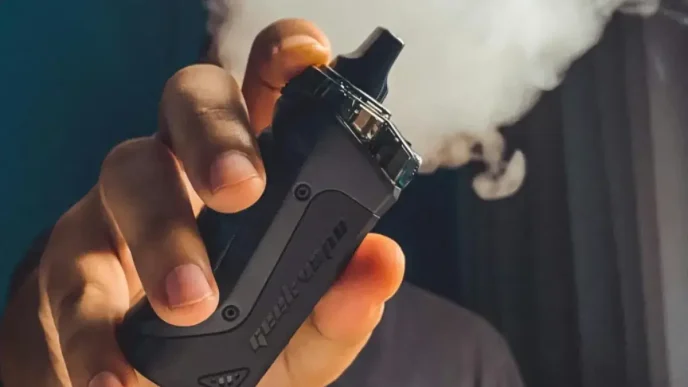Singapore Airlines (SIA) and its low-cost subsidiary Scoot have announced a blanket ban on the use and charging of power banks during flights, effective from 1 April 2025. The decision follows a series of high-profile cabin fire incidents linked to the portable battery packs over the past three months, raising fresh concerns about aviation safety in an era of ubiquitous personal electronics. While the move prioritises passenger and crew safety, it has sparked mixed reactions from travellers and experts, who warn of potential inconvenience and enforcement challenges.
The ban aligns with similar restrictions imposed by other Asian carriers, including Thai Airways, Eva Air, and China Airlines, reflecting a growing regional consensus on the risks posed by lithium-ion batteries in confined cabin environments. SIA’s spokesperson underscored the airline’s commitment to safety, stating, “The safety of our customers and crew is a top priority for the SIA Group. Our crew are trained to remain vigilant and ensure customers comply with in-flight safety procedures.” However, specific penalties for non-compliance remain unclear, leaving room for speculation on how rigorously the rule will be enforced.
A Proactive Response to Rising Risks
The recent spate of cabin fires, reported on airlines such as Batik Air and Air Busan, has spotlighted the hazards of power banks, which often contain lithium-ion batteries prone to overheating or short-circuiting if damaged or poorly manufactured. While current International Air Transport Association (IATA) regulations mandate that lithium-ion batteries be carried in the cabin rather than the cargo hold—due to the risk of undetected fires in inaccessible areas—they permit power banks with capacities up to 100Wh without restriction, and up to 160Wh with airline approval. Devices exceeding 160Wh are barred entirely. SIA’s new policy, however, goes further by prohibiting usage or charging outright, even for compliant devices.
John Tan, a lead professional officer in air transport management at the Singapore Institute of Technology, views the ban as a necessary precaution. “As new technologies such as personal devices become more prevalent, the industry is increasingly focused on managing risks,” he told The Straits Times. “This proactive approach shows that airlines are addressing potential safety issues before they become widespread problems.” Yet, he acknowledges that the ban may disrupt the travel experience, particularly for frequent flyers and business travellers reliant on power banks to stay connected during long-haul flights.
Enforcement and Passenger Compliance
The practicalities of enforcing such a ban remain a point of contention. While SIA has not detailed specific consequences, experts suggest a tiered approach. Mr Tan predicts that initial non-compliance will likely result in warnings, escalating to fines or device confiscation if the issue persists. “In extreme cases, passengers might be removed from the flight once it lands, and repeat offenders could be banned from future flights,” he added.
Caleb Sim, a senior lecturer in aviation management at Republic Polytechnic, draws parallels with the 2016 ban on the Samsung Galaxy Note 7, which was deemed a fire hazard after multiple overheating incidents. At the time, SIA and other global carriers denied boarding to passengers carrying the device, while non-compliant travellers in the United States faced fines or criminal prosecution. Mr Sim argues that Asian airlines, often prioritising a service-oriented approach, may hesitate to impose harsh penalties without backing from national or international civil aviation authorities. “They usually aim to create a positive travel experience for their passengers,” he noted. “So, I suspect they will not be too harsh in enforcing the consequences until authorities step in with regulations.”
This reluctance could pose risks. Darren Lee, a 31-year-old engineer who frequently flies with Scoot, worries that some passengers might covertly use power banks, potentially increasing dangers. “When I reach my destination, I don’t want to have to worry about my phone dying as I navigate the airport or book transport,” he said. He also expressed frustration at Scoot’s policy of charging between $5 and $11 for in-seat power in economy class, a cost he is unwilling to bear. Mr Lee’s concern that hidden usage could lead to heat build-up in enclosed bags highlights a potential unintended consequence of the ban.
Balancing Safety with Convenience
Public opinion on the ban is divided. Dylan Wong, a 31-year-old freelance creative from Singapore, supports the measure, prioritising safety over convenience. “For me, getting from one destination to another safely is more important than having a fully charged device,” he said. Others, however, lament the loss of flexibility. Business travellers, in particular, face challenges on long flights without access to personal power sources, especially on budget carriers like Scoot where in-seat power comes at a premium. An SIA spokesperson assured that Scoot remains committed to affordable pricing, though no specific concessions were announced for affected passengers.
Beyond immediate inconvenience, the ban raises broader questions about the quality and regulation of power banks in the market. Mr Sim advocates for in-depth research to identify the make and model of devices involved in recent incidents, arguing that not all power banks meet the same safety standards. “Right now, we don’t really have any control over what type and quality of power banks passengers bring on board,” he explained. Such data could inform more targeted regulations, potentially allowing safer models while restricting high-risk ones, rather than imposing a blanket ban.
A Shift in Aviation Safety Norms
The power bank ban signals a pivotal moment in aviation safety, reflecting how the industry must adapt to the rapid proliferation of personal electronics. Lithium-ion batteries, while integral to modern life, pose unique challenges in high-stakes environments like aircraft cabins. Past incidents, such as the Samsung Galaxy Note 7 debacle, demonstrated the need for swift, decisive action to mitigate risks. SIA’s latest policy extends this logic, prioritising prevention over reaction, even at the cost of passenger convenience.
Yet, the effectiveness of the ban hinges on enforcement and passenger cooperation. If travellers perceive the rule as overly restrictive or inconsistently applied, compliance may falter, potentially undermining the safety gains. Moreover, without clearer guidelines or international regulatory support, airlines like SIA and Scoot may struggle to balance their dual mandates of safety and customer satisfaction. Mr Tan’s observation that the industry is “increasingly focused on managing risks” suggests that such policies may become more common, extending beyond power banks to other emerging technologies.
Looking Ahead
As the 1 April deadline approaches, SIA and Scoot face the challenge of communicating the ban’s rationale to a diverse passenger base while ensuring crew are equipped to handle non-compliance. The broader aviation sector, too, must grapple with the evolving intersection of technology and safety. For now, travellers in South East Asia and beyond are advised to plan ahead—whether by charging devices pre-flight, investing in airline-provided power options, or simply embracing a digital detox at 30,000 feet. While the inconvenience is undeniable, the underlying goal of preventing cabin fires is one few can dispute.
In a region where air travel is a lifeline for business, tourism, and family connections, SIA’s decision underscores a fundamental truth: safety must remain paramount, even in the face of modern conveniences. How this balance is struck in the coming months may set a precedent for airlines worldwide.














